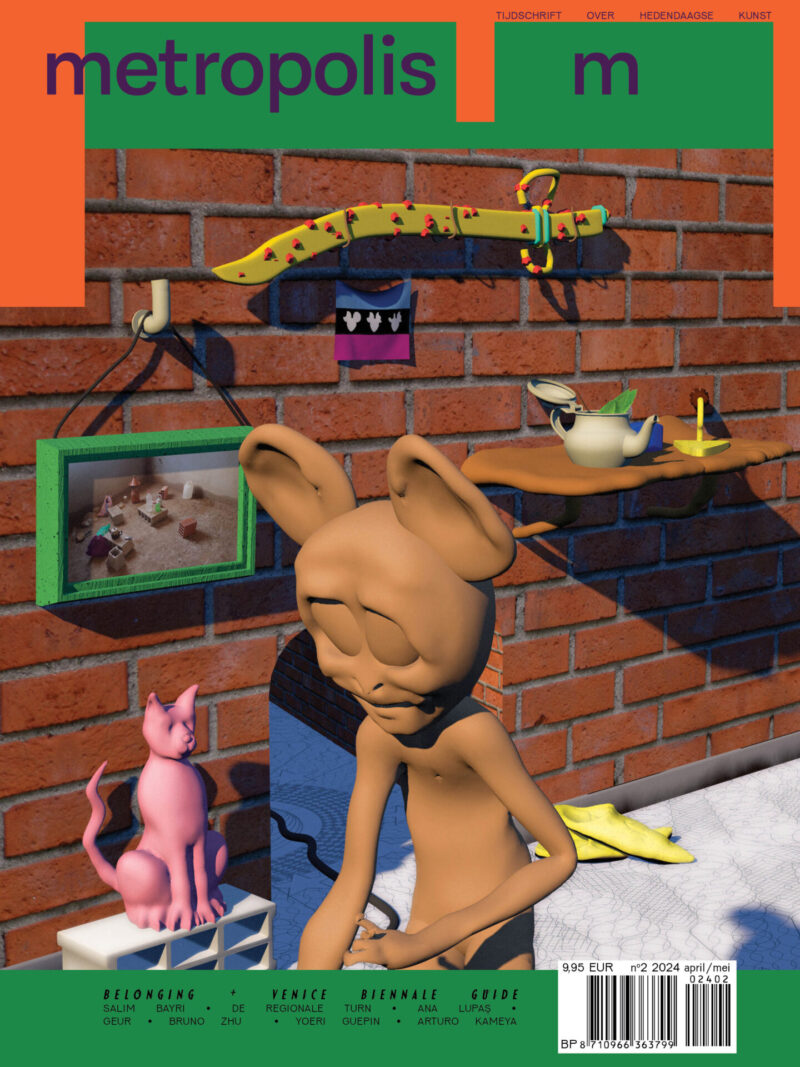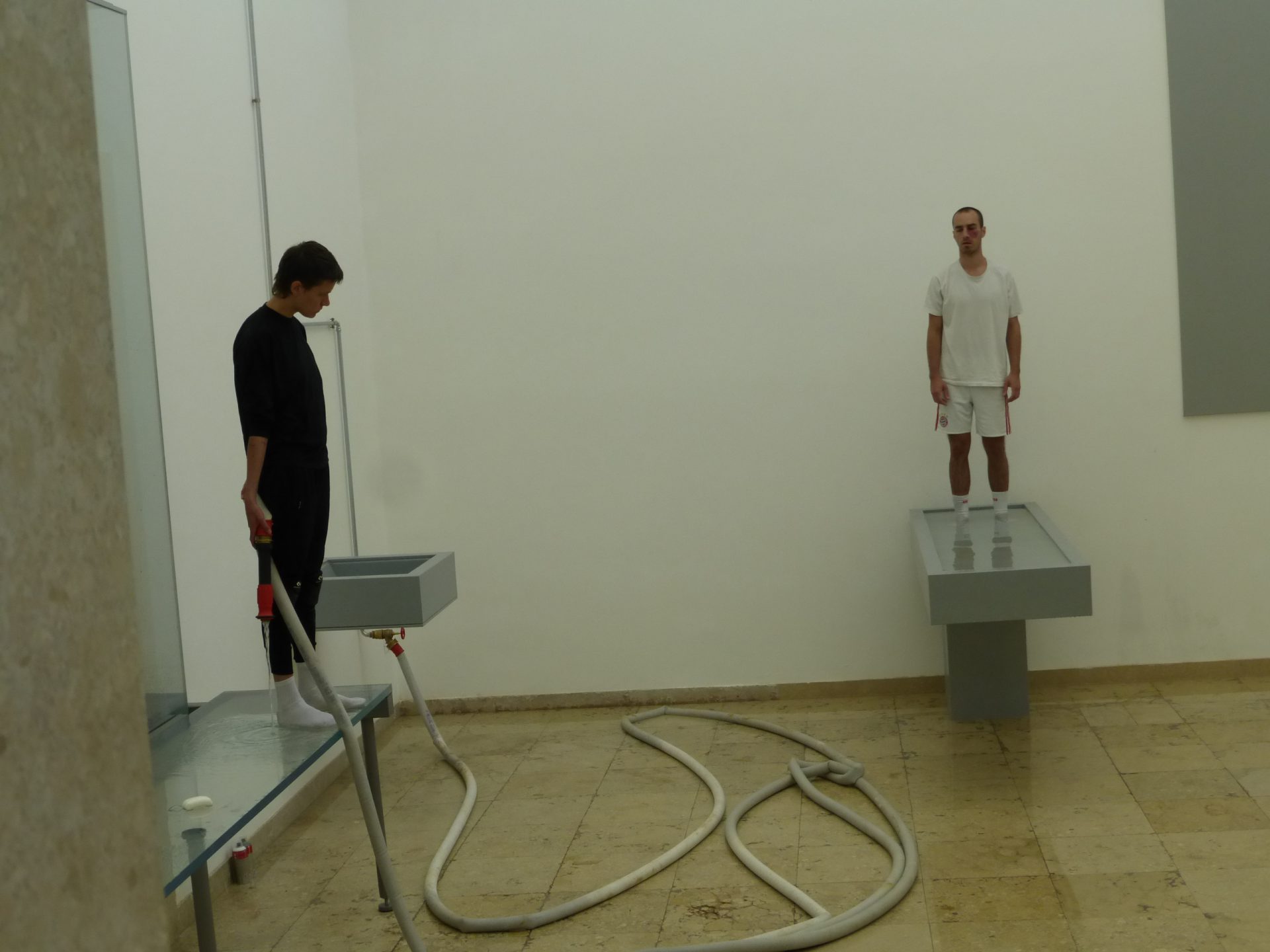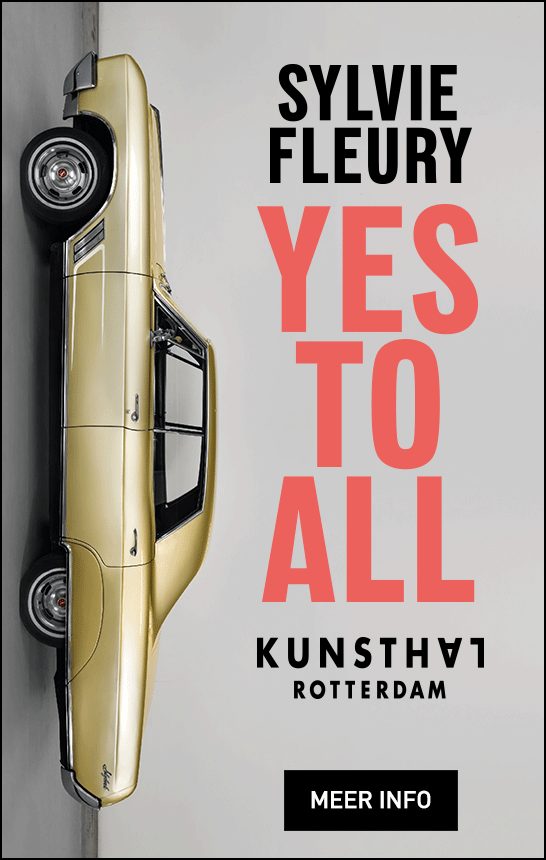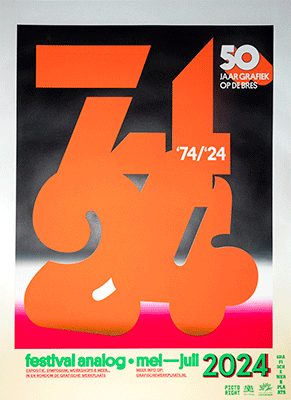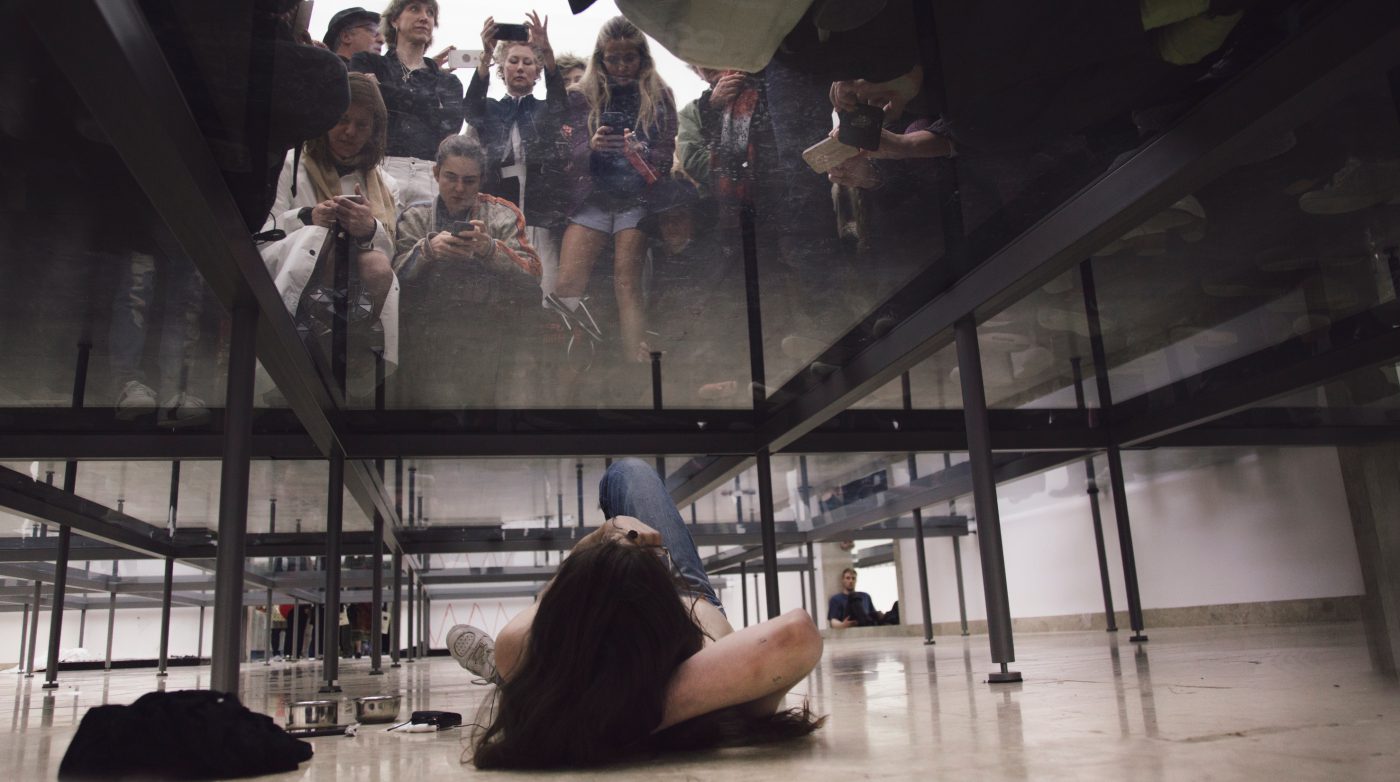
courtesy German Pavilion, photo by Nadine Fraczkowski
Anne Imhof: ‘I want the building to start to sweat’ – het kunstjaar in vijf gesprekken
In Nederland hield het paviljoen van Wendelien van Oldenborgh de gemoederen bezig (lees hier een interview met haar en curator Lucy Cotter), maar internationaal trok Anne Imhof op de Biënnale van Venetië de aandacht naar zich toe. Aan de vooravond van haar performance-marathon in het Duitse paviljoen bezochten wij haar in haar woonplaats Frankfurt met als centrale vraag: ‘Wie tickt Anne Imhof?’
On a recent rainy afternoon, Anne Imhof, the Frankfurt-based, 38-year-old visual artist who is to represent Germany at this year’s Bienniale dell’Arte in Venice, is working alone in her studio. Tucked among furriers’ showrooms and clothing manufacturers a few steps north of Frankfurt’s central railway station, her studio space features high ceilings and large, inclined roof-windows which immediately convey a pleasant sensation of air and light, in stark contrast to the grey skies outside. Finding a studio in Frankfurt is challenging, she admits, especially when one seeks working space independently from the city’s famous art school.
Imhof (b. 1978) graduated from Städelschule in 2012. After a two-year working stint in Paris – a grant awarded by Hessische Kulturstiftung in 2013 – she returned to live and work in Frankfurt. Since her graduation show at Frankfurt’s Portikus in 2013, where she presented two early performance pieces, Aqua Leo (2013), and School of the Seven Bells (2012), her artistic career has taken a steep and steady rise. At this stage, and after the official announcement made in October 2016, Imhof herself still seems pleasantly surprised to represent Germany in Venice.
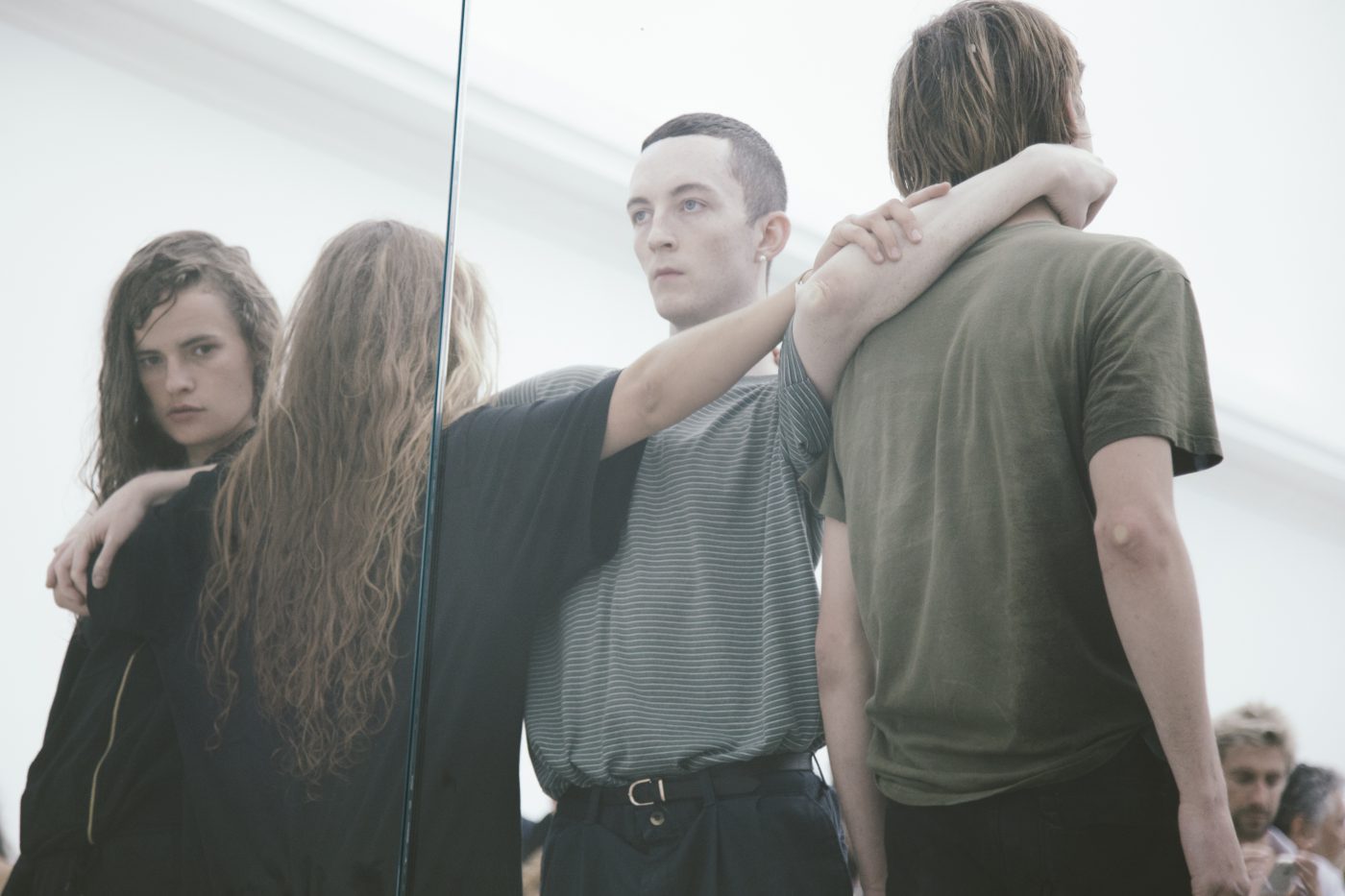
courtesy German Pavilion, photo by Nadine Fraczkowski
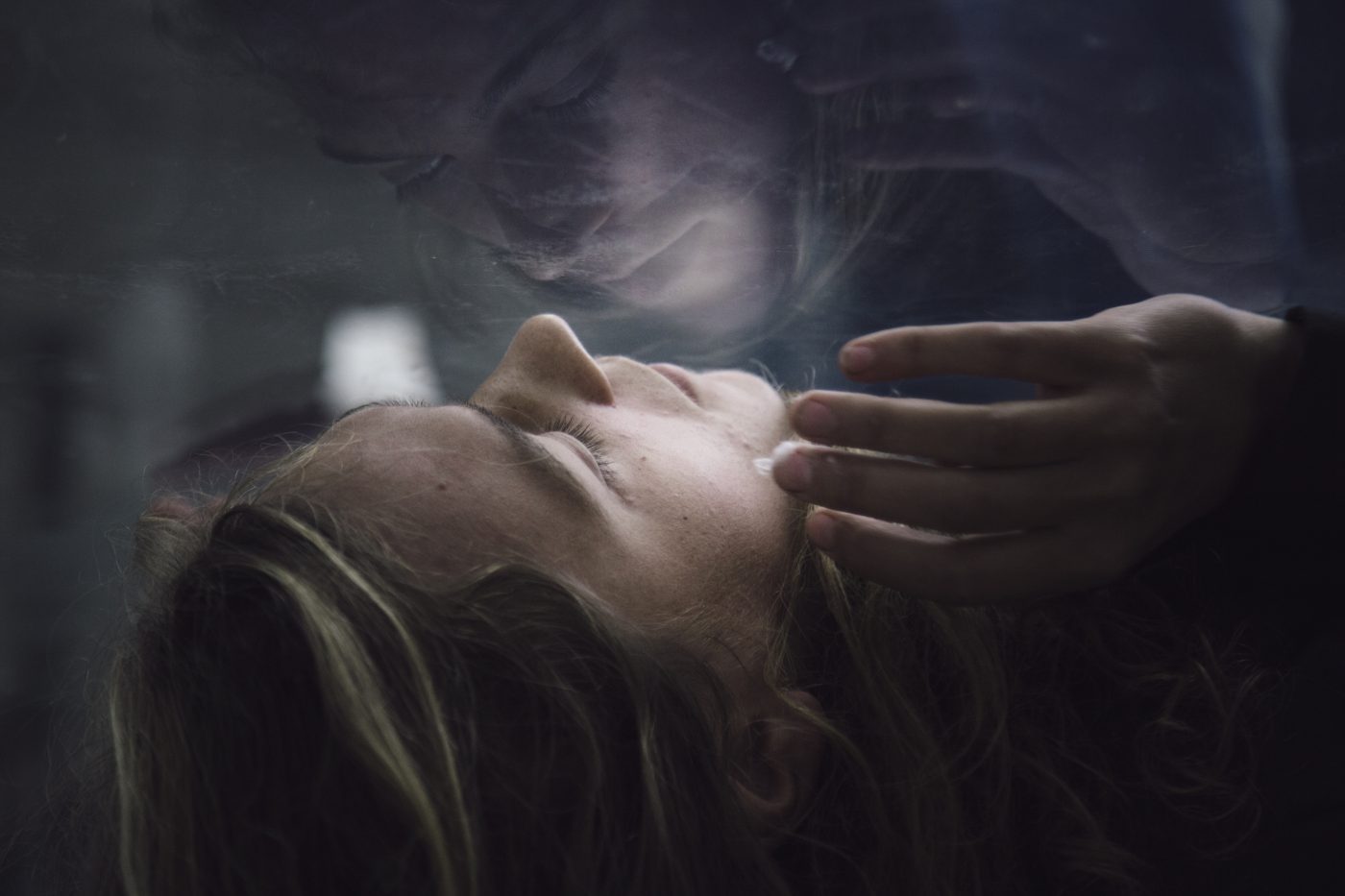
courtesy German Pavilion, photo by Andine Fraczkowski
Chosen by Susanne Pfeffer, the current director of Fridericianum in Kassel and curator of Pamela Rosenkranz’s immersive installation at the Swiss Pavilion in Venice in 2015, Imhof acknowledges with a smile that she is ‘not one of those artists who has had many big solo shows yet’, adding that she feels comfortably ‘supported’ by Pfeffer and her experienced team. What she strives for is an all-encompassing piece, an ‘entirely new complex of work, like a giant painting, at the very moment when it is revealed to the spectator’.
She distinctly remembers visiting the German Pavilion right after the closing of 2016’s Venice Architecture Biennale. ‘The columns were enormous.’ She then decided to fully acknowledge the entire setting – including the fence (surrounding the Giardini) and the Pavilion’s historically charged architecture (constructed in 1909, reconfigured in 1938 in national-socialist architectural style with monumental pillars added to its front entrance.) ‘I want to make the building sweat’, Imhof explains, adding, ‘The space has a history which has to remain transparent. I do not aim to conceal it.’
To show instead of to hide seems to be her artistic credo. Her multi-layered pieces combining performance, drawing, painting, sound and lyrics draw on props such as colourful soft drink cans, mats and boxing gloves as well as technological devices (drones, cell phones) and animals (donkeys, falcons). They reflect the fluidity of a work in progress, though meticulously laid out in the artist’s mind beforehand, embodied, shaped and constantly rewritten by the performers’ distinct personalities. Sometimes, Imhof says, she has sketched out what one could call the ‘masterplan’ of a new piece months and years before its actual realisation. Typically, her imagination is triggered by pictorial reference: a photograph, or else, the slightest detail in an Old Master’s painting – say, a ring on a gesturing hand or the direction of a gaze depicted by Giotto; a mouth wide open.
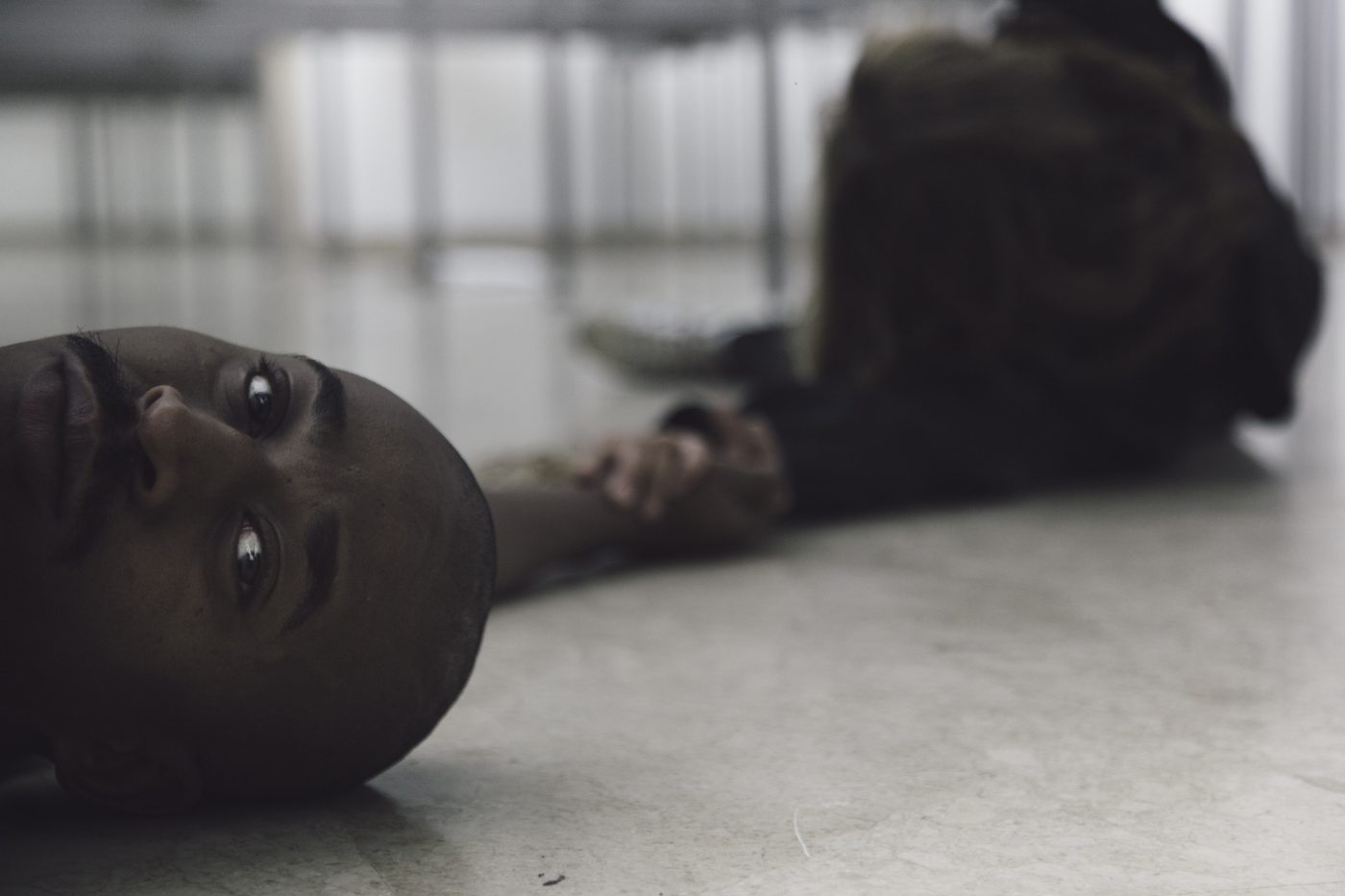
courtesy German Pavilion, photo by Nadine Fraczkowski
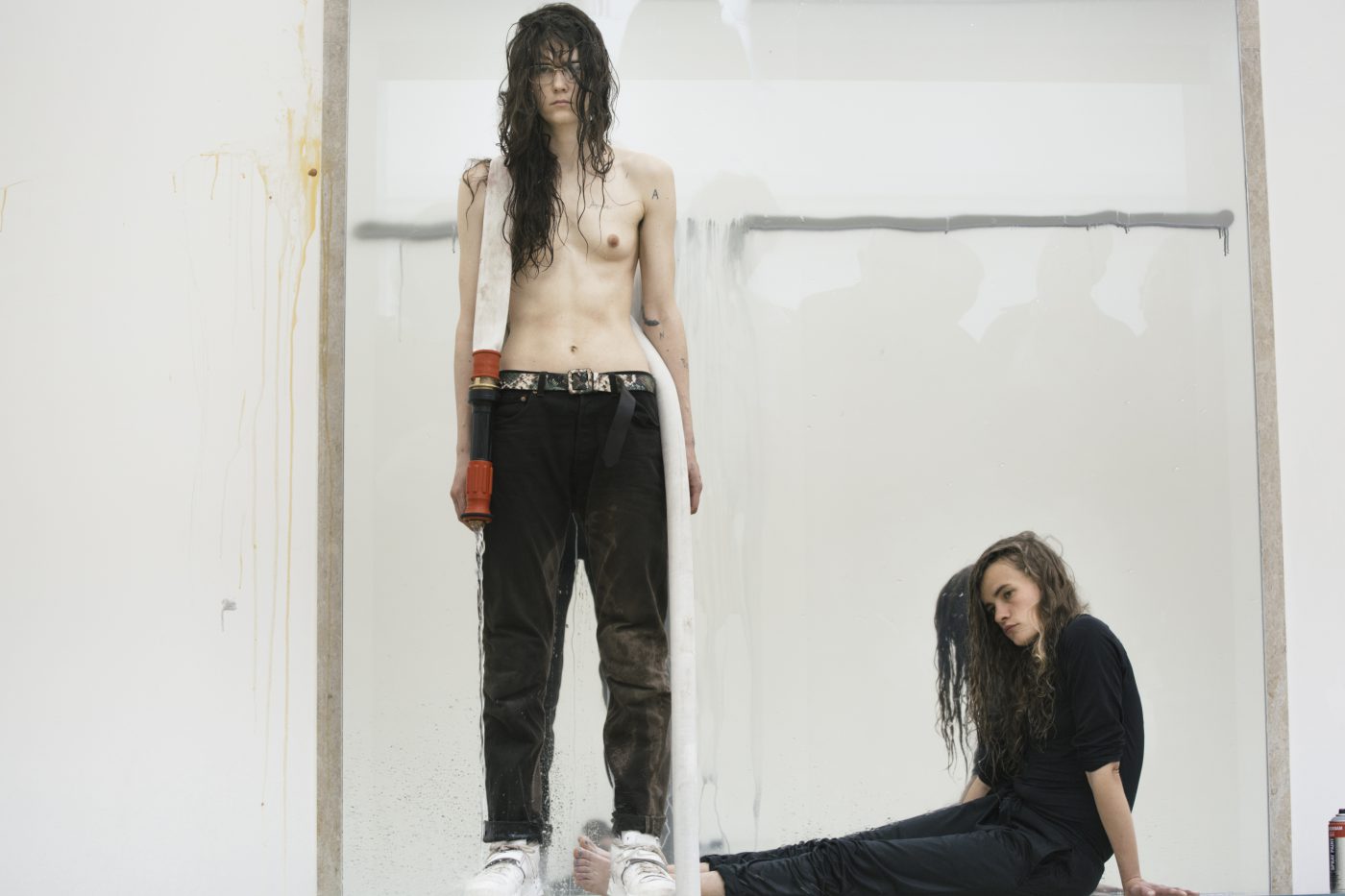
courtesy German Pavilion, photo by Nadine Fraczkowski
A performance piece, or Stück as Imhof calls it in German, is always subject to modification in time and space. ‘Theme and variation are indeed reoccurring elements in my work’, she explains, thus referring to a rhythmical, even musical element in her work that can be distinctly perceived in the three-fold performance cycle Angst, the second part of which she staged at Hamburger Bahnhof as part of the laureate exhibition of the biannual Preis der Nationalgalerie für junge Kunst in Berlin in September 2015. Imhof had been nominated along with Slavs and Tatars, Florian Hecker and Christian Falsnaes. She made the prize hers single-handedly and convinced larger audiences with Angst II (2015). Imhof chose to call it an ‘opera’. Given the piece’s three acts, its complex score, the characters involved, as well as its layered narration, the lyrical genre is not at all a surprising choice. The main reference for Angst is derived from Kafka’s novel The Great Swimmer (1920). It tells the story of a nautical sports champion who, after winning the Olympic Games, acknowledges in public that he cannot swim. In the dreamlike setting that Kafka describes, the dichotomy of knowing and not knowing, of being and appearance, becomes a pure projection of the mind.
Sound is definitely a strong reference in Imhof’s work: Bach’s masterly use of rhythmic repetition with slight variation in his cantatas, or, even earlier, the call and response scheme found in the medieval liturgical choir and subsequently employed in a more secular manner by Monteverdi in his operas both come to mind. Imhof’s Angst draws on elements of the sacred and the profane alike – elements from Christian mythology seamlessly blend with the contemporary technology used for surveillance and data management. Especially in the closing sequence of Angst II, a particularly emphatic moment occurs when artist Eliza Douglas, the androgynous-looking performer, her frail body wrapped in fog, looks down on the audience from the top of a spiral staircase, bearing a hooded falcon on her arm: isn’t this what Joan of Arc is made of?
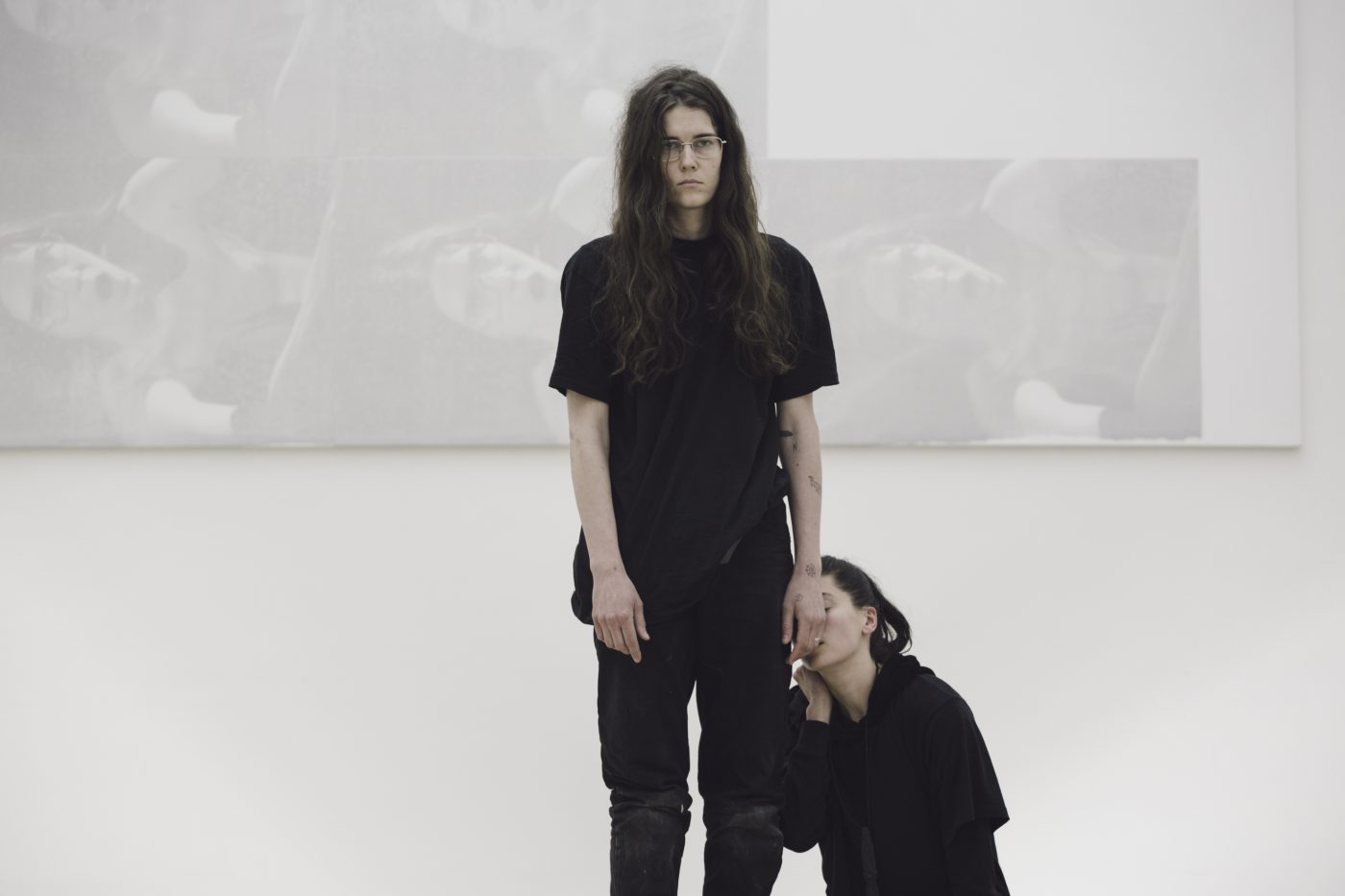
courtesy German Pavilion, photo by Nadine Fraczkowski
Imhof’s plans for Venice evolve around visual, aural and physical strategies of inhabiting a space over an extended stretch of time – the Biennale lasts for seven months. Faced with the challenge of (extreme) duration, Anne discusses Okwui Enwezor’s Arena that, for the Biennale’s 56th edition in 2015, introduced the concept of ‘epic duration’ along with ‘liveness’ – seemingly at odds with the race against time that most visitors of biennials, not only in Venice, but around the globe – more or less voluntarily commit themselves to. Meanwhile, she herself is very sensitive to the idea of ‘having someone read something to me’, (e.g. Isaac Julien, Das Kapital Oratorio, 2015), knowing that, ‘even when I exit the performance, the reading continues’; a proof of utter respect for the time a piece needs to unfold. In her own pieces, though, the precise marking of the beginning and end is central: the very sense of duration, of ‘time on one’s hand’ – time for things to come as well as time passed since the performance started – allows the performer to settle into the here-and-now, to navigate through a piece, always remaining in close contact with the audience.
With their intertwined, complex action, Imhof’s works are reminiscent of great historical (or, again, liturgical) paintings that narrate consecutive series of events on one canvas, rendering chronological time as pictorial space. Like paintings, Imhof’s pieces call for a particular type of participation, which French philosopher Jacques Rancière described in his seminal analysis Emancipated Spectator (originally referring to the realm of cinema), as ‘an active gaze’, meaning ‘a gaze being an activity in its own right, never passive’. Accordingly, when Imhof invites the audience to wander around her monumental settings, she invites spectators to look at the performed action from different angles, thus defining visual engagement through bodily presence from within a multi-centred action. Repeated incidents of visitors touching performers in the course of a work demonstrate the extremely thin line between ‘activating the audience’ and ‘active audience participation’ that Imhof and her performers constantly delineate. Imhof admits that she can understand this temptation, given that ‘the audience and the performers are physically extremely close’. ‘The outlines become blurred’, she observes, while ensuring that ‘at the same time, the overwhelming majority of people absolutely respect the performers and remain in the spectator’s role.’
With Imhof, participation becomes an essentially mental attitude. This of course does not stop her from radically transforming the museum space by transgressing its temporal and spatial limits: night-time opening hours, the radical transformation of entire institutions into one single performative setting as well as the physical requirements for performers to be present over many hours, making them ‘inhabit’ the gallery space, challenge the traditional bourgeois concept of the museum still looming through as a space of quiet contemplation of mute objects.
Quite like a painter who would use perspective to create a sense of space on his canvas, Imhof uses sound as a tool to achieve similar effects in her performance. For the gigantic former railway hall of Hamburger Bahnhof, she created together with composer and performer Billy Bultheel and Eliza Douglas circumscriptive ‘sound fields’: reverberations of baseball bats on metal, for instance, were captured live and amplified through the microphones that every performer wore on their bodies, to be then transmitted to other areas in the museum. Cell phones rendering pre-recorded lyrics and choirs were used to achieve a layering of sound and voice.
Imhof’s consistent use of technical devices and state-of-the-art tools for surveillance and person-related data management, such as drones, have somehow earned her the reputation of addressing mainly a generation of ‘techies’ and ‘millennials’, thus disavowing the deeply disturbing message that her work really conveys, according to the official press release: ‘Her scenarios visualize the constitution of the body in the demarcation of material and discursive, of technological, socioeconomic, and pharmaceutical boundaries. Imhof thus reveals the space between body and reality, the space where our personality comes into being.’
DIT INTERVIEW IS GEPUBLICEERD IN METROPOLIS M Nr 2-2017 LICHAAM + BIËNNALE VAN VENETIË. ALS JE NU EEN JAARABONNEMENT AFSLUIT STUREN WE JE HET LAATSTE NUMMER ( Nr 6 DOORBRAAK + NIEUWE COLLECTIE) GRATIS OP. MAIL JE NAAM EN ADRES NAAR [email protected] (ovv actie nr 6)
Marlène Rigler is an art theorist and a curator
Marlène Rigler
is an arts theorician and curator with academic background in Aesthetics, Media and Contemporary Literature